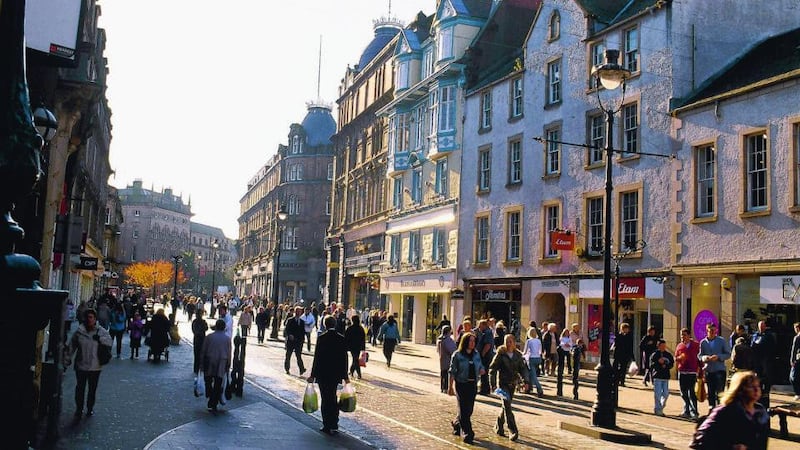Stewart Hosie, the local Scottish National Party House of Commons MP, points delightedly to Saltire flags marked with a "Yes" that hang in the windows of houses in Pitkerro Drive in Dundee. "It's fantastic," he says.
His wife, Shona Robison, a member of the Scottish Holyrood parliament and a minister in the Scottish government, who is driving the car, nods in agreement.
“People are coming in and paying £5 [€6.25] for those flags. We are trying to order some more. We ran out of badges a few days ago, we are trying to get some of them, too,” she says.

Dundee was once a Labour stronghold. However, during the city’s post-industrial decline, poor habits formed during years of single-party rule and a few scandals brought the party down.
Labour does not deny the difficulties it faces. Last week, its deputy leader in Scotland, Anas Sarwar, acknowledged that his party faces "a challenge" to head-off a majority Yes vote in the city.
“I have always campaigned on the premise that you could lose by one vote and that makes sure that you are not complacent and that you put everything you can into it,” he said.
For a hundred years, Dundee was the city of "jute, jam and journalism", a place of often grinding poverty where the women worked in the jute factories and the men stayed at home to mind the children. Famed for its jam, it was known, too, for publishing firm, DC Thomson, which still runs a stable of newspapers but became internationally famous for The Beano and The Dandy comics.
The decline lasted for decades, scarring the city’s soul. But it has begun to be reversed, with Dundee developing a reputation in life sciences.
By 2017, the new Victoria and Albert Museum will "rise like a spaceship out of the water" on the waterfront, says Hosie. Dundee hopes to benefit in the same way the that the northern Spanish city of Bilbao, also crippled by industrial decline, did with the opening of the Guggenheim Museum.
Promises
Dundonians, however, are a hard audience. “They’ve seen hard times. They believe things when they see them, not promises,” says Robison, as she is approached by a constituent outside a betting-shop.
Visitors are usually taken to meet local businessman Mohammed Issa, who started working in the family shop 40 years ago aged 12 and has since won a series of national awards.
Now a legend in the community, and a former “Citizen of the Year” in Dundee, Issa greets the political couple warmly.
"People should give Scotland a chance to be a success," he says.
However, his British identity is clearly important to him. His business card proudly declares that he has been awarded an MBE by the Queen for services to the community.
“Everyone has the right to their opinion. I feel that there has been a lot of scaremongering – about the pound, about the NHS. That’s what the public doesn’t like.”
Standing outside Issa’s shop, Hosie says he believes that many of those who oppose independence will not come out to vote on September 18th because of “the negativity” of the No side.
A strong voice for Yes in “the schemes” – the name given to council-owned, or housing association-owned properties in Scotland – is crucial if the Yes campaign is to have a chance of winning on September 18th.
Together, a third of Pitkerro, Kirkton and Hilltown on the eastern side of Dundee are among some of Scotland’s poorest districts, with high unemployment, poor health and short lives.
In the local elections three years ago, a third of locals voted, but the Yes campaign insists, as it does elsewhere in Scotland, that the turnout next month will exceed 70 per cent. “People are registering,” says Robison, “People have a hierarchy, they don’t come out much for Westminster, or local elections, but they vote in the Holyrood – “their election”, as they call it.
“But they’ll come out this time. Just look at the flags that you see. Some of them even went to polling stations for the European Parliament elections in May. Not to vote, mind you, but to make sure that they are on the register for the referendum. They are calling it their ‘big day’,” insists Robison.











